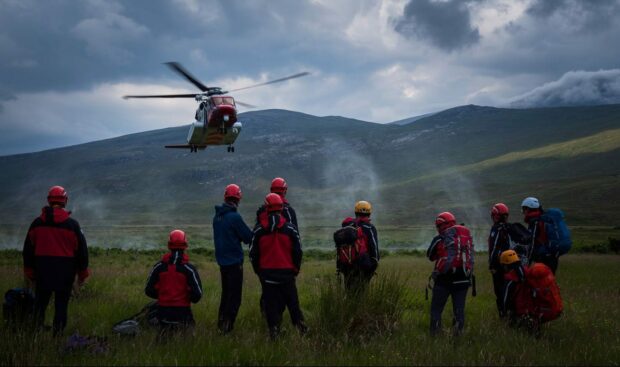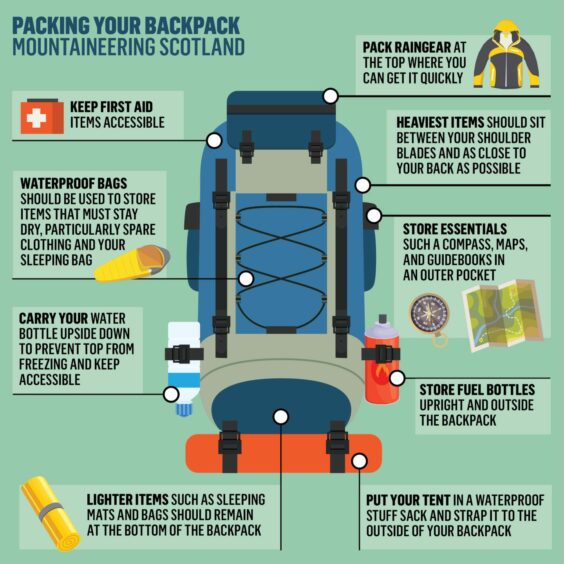Thousands of hillwalkers descend on Scotland every year to challenge themselves while taking in the stunning scenery.
But even the prepared hikers can find themselves caught out by the conditions, no matter the season.
And although our hard-working mountain rescue teams are always on call, there are a few simple steps every walker can take before heading out into the hills.
Ross Cadie, senior mountain safety advisor at Mountaineering Scotland, says no matter how long or adventurous the walk is, it should always start with good planning.
He said: “Understanding the weather conditions, the avalanche forecast and what skills you and those you are going out with have will inform you on what to pack and how to pack it.
“This might be a surprise for some, but what order the bag is packed – and therefore the order it is most easily accessible in – depends on what conditions are expected throughout the journey.”
Reverse packing key for preparing hillwalking backpack
Mr Cadie recommends “reverse packing”, meaning pack the things you will least likely need first at the bottom, with the essentials on top.
He said: “For example, if it is forecast to be a beautiful, clear and calm winters day with crisp hard snow down to 400m, then I would pack my spare layers and waterproofs at the bottom of my bag but have the crampons sitting near the top as I will anticipate that I’ll be needing them quite early on in my walk.
“In contrast, if the forecast was for full ‘Scottish’ conditions with strong winds and soft snow, then I would be wearing my waterproofs as I leave the car, my spare warm layers would be near the top and my crampons would be sitting at the bottom.”
Remember the 5Ps
Ben Dyson, a medical officer with Assynt Mountain Rescue Team, urged people to remember the five Ps: Proper Preparation Prevents Poor Performance.
As a health professional, he says carrying a first aid kit is a must – and that it should contain items such as plasters, blister patches, scissors and bandages.
Mr Dyson said: “All of the Assynt Mountain Rescue Team volunteers carry an emergency shelter, spare food and insulating clothing in their packs.
“If you become immobilised for whatever reason, place something between you and the ground (rucksacks are great for this), and your emergency shelter over you.”
He also encourages people to make someone aware of their intended journey through remote terrain and call regularly with updates including pictures with timestamps.
Mountain rescue teams are always at the ready to head out, but walkers should always check the Scottish Avalanche Information Service during winter.
The Be Avalanche Aware App also provides easy access to daily reports and users can also set up alerts for changing conditions on-the-go.


Conversation